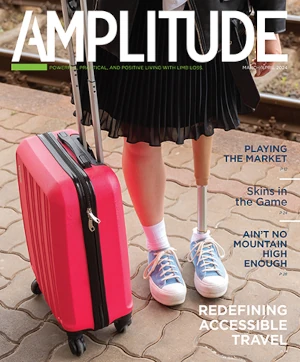When Capt. Chesley Sullenberger landed his disabled Airbus 320 in the Hudson River back in 2009, saving hundreds of lives, there were no disabled passengers aboard. But suppose there had been? Would the crew have been trained to evacuate an amputee, wheelchair user, or sight-impaired person quickly and safely? Would the aircraft’s emergency exit pathways have accommodated those travelers?
We can’t say for sure, because the Federal Aviation Administration (FAA) doesn’t adequately test for those factors in developing its safety regulations. That’s a problem US Senator Tammy Duckworth aims to fix with legislation she re-introduced today.
The Emergency Vacating of Aircraft Cabin (EVAC) Act, which Duckworth and co-sponsor Tammy Baldwin originally introduced last December, would require the FAA to devise emergency evacuation standards that are based on realistic assumptions regarding seat size, carry-on baggage, travelers with disabilities, seniors, and children. The Amputee Coalition is among a broad group of organizations that supports the bill.
“FAA regulations mandate that in the event of an emergency, all passengers, regardless of their age or physical ability, must be able to evacuate an aircraft within 90 seconds,” says Duckworth, a bilateral leg amputee and regular wheelchair user. “However, recent FAA evacuation simulations only used able-bodied adults under the age of 60, and no children. This ignored the fact that there are often children and seniors on flights, as well as people like me who regularly travel and have a physical disability.”
The FAA justifies the exclusion of children and people with disabilities from its simulations on the grounds that such participants could be injured. But that’s just a cop-out, Duckworth argues.
“I am tired of people getting away with that talking point,” she fumes. “There are many ways to make simulations more realistic without injuring participants. When I was in the military and we needed to time how long it took to carry an injured soldier off the battlefield, we had an able-bodied soldier play the part of an injured one. There’s no reason we can’t simulate the conditions we see every day on flights so we can have more realistic evacuation standards.”
The EVAC Act would require the FAA to build the following conditions into its safety simulations:
- Passengers of different ages, including young children and senior citizens
- Passengers of different heights and weights
- Passengers with disabilities
- Passengers who do not speak English
- Passengers who cannot speak, are non-vocal or non-verbal
- Presence of carry-on luggage and personal items like purses, backpacks and briefcases
- Seat size and pitch
- Seat configuration, location, and other obstacles in pathway to exit
- Presence of smoke, darkness or other factors diminishing visibility
The legislation is supported by more than a dozen disability advocacy organizations (including the Amputee Coalition), and by unions representing pilots, flight attendants, and other airline professionals. Captain Sully supports the bill, too.
“It should not take another tragedy to bring our aircraft evacuation standards up to date,” Duckworth says. “This is a pretty common-sense piece of legislation. If you ask the flying public if the FAA should conduct tests that simulate the actual people that are in the aircraft, I think most Americans would say: ‘Don’t they already do that?’ This is all about the safety of everyone who sets foot in an aircraft.”




